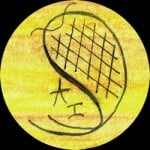wood moisture and large panel stability
Welcome! / Forums / General Woodworking Discussions / Wood and Wood Preparation / wood moisture and large panel stability
- This topic has 4 replies, 3 voices, and was last updated 10 years, 11 months ago by
Jason.
-
AuthorPosts
-
I need some advice on 2 issues that are on the same project, but not directly related. I’m building a shaker trestle table with yellow pine (painted) for the base and a cherry panel for the top.
Question 1 is regarding the pine. When I got the pine, it was around 16% on my moisture meter. I rough milled it, stacked/stickered it, and left it for 2 weeks. Now the moisture is around 10%. Unfortunately, it has gone up — my shop is currently around 75% humidity. I have an old yellow pine board that doesn’t even register on my meter so I know if I wait long enough it will dry. I’m planning to mill and assemble my joints the same day, but how long do I really need to wait before I can start? Is the issue acclimating to the shop or drying?
Question 2 is about the cherry top. A woodworking instructor in the area, who is ‘classically trained’ by some well respected woodworkers, advised me to always rip my stock into 3-4 inch strips and then glue them back together. I understand that it breaks the spine of the board (so to speak) to make it completely stable but is that really necessary?
Thanks!

[quote quote=12785]Two very good questions Jason. I do not have any answers for you. What about the rest of the forum? Anybody got any ideas?
Robin HC
[/quote]Thanks Robin. I know that Paul used pine while he was here in Texas so was hoping for some direction. It looks like the humidity in my shop won’t go down until the spring, and its about to get too hot to work out there. I really hope to get some work done before then.
 30 May 2013 at 1:26 am #12798
30 May 2013 at 1:26 am #12798I don’t have definitive answers either but here is my grain of salt info…
1. yellow pine…can you cut your parts to rough size and then take them in the house, where I assume you have temperature/humidity control, for a few days to see if that speeds up the process? A table that will last generations is worth tripping over lumber for a week or so.
2. cherry top…multiple strips will almost always be more stable. That being said there are several factors that can effect the stability of a large panel, Tightness of grain is a big one. However, with the trestle table are there not stretchers at each end that almost the full width of the top that the top attaches too? These will act as batons and help to keep the top flat…the shakers knew what they were doing.
I hope that this helps and that I did not muddy the water.
Good luck and post pics when your done.
[quote quote=12798]I don’t have definitive answers either but here is my grain of salt info…[[snip…]
[/quote]
Greg,
I hesitated to bring my wood into the house because I didn’t know what it would do when I took it back to the shop. But I guess I could dry it and then acclimate it to the shop again. I may give that a shot. Your comment about the table having batons is true. The instructor said that the strength of the movement would actually be strong enough to counter any attempts to mechanically control it. But the baton is significant, and the more I think about it, I think he’s wrong. I’m not gonna worry about the top.
Thanks!
-
AuthorPosts
- You must be logged in to reply to this topic.
